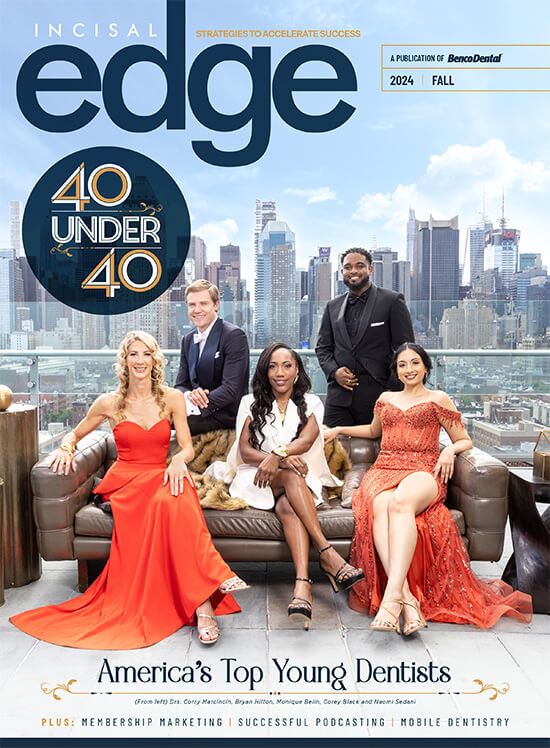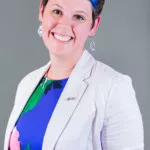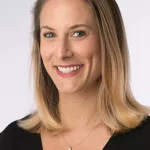The venerable American Association of Women Dentists recently celebrated its 100th anniversary of helping female dental professionals of all stripes achieve their greatest success through mentoring, networking and continual support. As the AAWD looks ahead to its second century, the group’s leaders talk about how far they’ve come—and what the future of dentistry looks like for women across the nation.
ON MARCH 4, 1893, Dr. Annie T. Focht, secretary of the Women’s Dental Association of the United States, issued a report noting that the organization’s membership ranks had grown to 32 dentists in the year since its founding in Philadelphia, describing the group as “a society by which [women] could strengthen themselves by trying to help one another.”
The WDA spent the next three decades making fitful but substantial progress for the interests of women in the profession. Then, in 1921, almost exactly a century ago, a dozen female dentists, in Milwaukee for the annual meeting of the American Dental Association, founded the Federation of Women Dentists as a sort of successor organization. Two name changes and 100 years later, the American Association of Women Dentists continues to advocate for the interests of female dental professionals at every stage “from dental school through retirement,” as the group puts it.
The mission of the AAWD, which now has professional and student chapters across the U.S. (and even one in Canada), dovetails nicely with that of Benco Dental’s Lucy Hobbs Project, chartered nine years ago to help women in dentistry achieve their professional and personal ambitions through networking, acts of service and countless other means of support. (Benco Dental is the publisher of Incisal Edge.)
The profession has of course changed beyond all recognition since 1866, when Lucy Hobbs became the first American woman to earn a dental degree. Women now make up a majority of dental students nationwide, which means the face of the profession will without question be transformed in the years and decades ahead as a new, far more female cohort puts down roots both in dental practices and at the top of industry organizations. They can be certain the AAWD will be there to support them along the way.
BLAZING HISTORICAL TRAILS
“The founding mothers, women of stature in dentistry, never intended for AAWD to foster separation of women from men, nor did they wish to cause fragmentation in the profession,” says Dr. Lauren Aguilar, the AAWD’s president-elect. “These women were involved and respected at all levels of organized dentistry. They wanted a support organization to share their common interests and to enjoy friendships and camaraderie.”
These women were involved and respected at all levels of organized dentistry. They wanted a support organization to share their common interests and to enjoy
friendships and camaraderie.”—Dr. Lauren Aguilar
Dr. Aguilar, an endodontist in Charlottesville, Virginia, notes that the AAWD’s official centennial occurred in August 2021. Chronicle Monthly, the organization’s in-house publication, highlighted speeches the group’s leaders gave on the fiftieth and seventy-fifth anniversaries. “In addition, throughout 2021,” Dr. Aguilar adds, “we’ve been highlighting past presidents and their remarks on what their experience meant to them.”
Consider the Federation of Women Dentists’ first president, for one: Dr. M. Evangeline Jordan, following three decades later in Lucy Hobbs’s footsteps, was an 1898 graduate of the University of California School of Dentistry (now the University of California San Francisco School of Dentistry). Considered one of the founders of pedodontics, Dr. Jordan was one of the first known practitioners to limit her practice to the treatment of children. She would go on to found all-female chapters of various dental societies and associations around Southern California and was granted honorary membership in both the American Society of Dentistry for Children and the American Academy of Pedodontics once she had retired from daily practice; she died in 1952.
The organization’s third leader, Dr. Gillette Hayden, was a 1902 graduate of the Ohio State University and would go on to found the American Academy of Periodontology in 1914 with Dr. Grace R. Spaulding, the sixth president of what would become the AAWD.
The group’s past members include Ida Gray Johnson, the United States’ first black female dentist, among many others. “While there are other niche groups for women dentists,” Dr. Aguilar says, “none have the historical backbone of the AAWD.”
UNITY ABOVE ALL
Dr. Brittany Bergeron, a cosmetic dentist in Towson, Maryland, served as the AAWD’s president in 2019 and is now in charge of the organization’s corporate-relations efforts. Part of what keeps the group’s influence strong, she observes, is its emphasis on a united front. “Numbers matter,” Dr. Bergeron says. “It’s easy to say no to an individual, but not to a group. Organized dentistry is relevant if we want to be able to influence decision making as it affects our industry. These decisions are made on a local, state and national level, so we need to work together to have a voice and a seat at the table to have our input and opinions considered.”
Dr. Aguilar concurs. “AAWD is the only nationally recognized organization for women in dentistry,” she says, citing member benefits and tools that include continuing education, mentoring and a platform for peer-to-peer connections. That last factor is crucial—even in a pandemic-hampered world, there’s no substitute for face-to-face networking, which the Lucy Hobbs Project has emphasized in the near-decade since its inception.
“We’re an organization by women, for women,” Dr. Bergeron says. “Let’s face it: There are conversations you’ll have only with your girlfriends or other women, whether they be about work, life, et cetera. By supporting each other—and women dentists need to support each other!—we’re building a network of professionalism and friendship.”
Dr. Bergeron likewise cautions against reading too much into bare statistics such as the male-female breakdown of dental-school students, significant though those gains are. “Although the gender composition of U.S. dentists has changed dramatically in the last 20 years, there’s not much else that has,” she says. “Dental equipment is still designed for male bodies,
journal ads are still aimed at a male audience and local dental meetings are still very much male territory.”
MAKING THE MOST OF THE NEXT 100 YEARS
Helping ensure that women’s increased visibility and greater numbers throughout the dental profession translate to tangible benefits at every level will, of course, be the work of the graduates and practitioners of the AAWD’s next century. Dr. Aguilar calls for “continued collaboration throughout all aspects of dentistry.” She cites the AAWD’s recent partnership with Hopetown Dental Lab, a high-tech family-owned lab in Fort Worth, Texas, as one example—the AAWD provides practice-management resources to it and other member organizations.
We’re an organization by women, for women.”
—Dr. Brittany Bergeron
“I see [the AAWD] becoming even more relevant than it has been in the past,” Dr. Bergeron says. “The demographic we represent is increasing. My hope is that these young grads and leaders find their voice in AAWD to ensure its existence for another 100 years.”
The group’s leaders hope to entrench that ethic of service in part by thinking back to their own professional beginnings and how far they’ve come. “I knew helping people was a passion; my Enneagram number is 2,” says Dr. Aguilar, referring to a popular personality test that marked her as a “Nurturing Supporter.”
“Putting others first fills my cup,” she adds. “I had the privilege to recognize this early on and pursued an interest in health care that became solidified in dentistry at age 16. I’ve never encountered a dentist who says they hate their job or [want] to choose another career. This resonated, and my path to dentistry was clear from an early age. I appreciate those who took the time to foster a genuine interest in helping others, [regardless of] the financial gain and accolades dentistry can offer.”
Dr. Aguilar routinely cites the importance of interpersonal connection to growth both personally and in the workplace. “I surround myself with women—dentists, friends and family,” she says. “I’m inspired by their stories and challenges. Heroes are women who speak their truths without fear of judgment. Heroes are people who open their hearts and minds to others.” (She calls legendary actor Julie Andrews, who exemplifies those qualities, her “personal celebrity icon.”)
Dr. Bergeron was also exposed to the profession early; her father is a dentist. “I’ve always appreciated that dentistry combines health care and art,” she says, “and I love that every day I have the chance to use my brain and my creative side.
“I’m inspired by people who are different from me,” she adds. “I’m Type A; I like everything to fit in a perfect row. In reality, life—and dentistry—aren’t like that. I try to surround myself with people who challenge my way of thinking while supporting that we can have different views.”
That, in the end, is the AAWD ethos. As the Lucy Hobbs Project nears the end of its first decade, the AAWD is beginning its second century, forging ahead with its ethic of service and success. As more women make the dental practice their professional home, the group’s profile and influence will only grow. Its extraordinary roster of past presidents and members—to say nothing of Lucy Hobbs herself—would no doubt be beaming with astonishment, satisfaction and pride.




 We’re an organization by women, for women.”
We’re an organization by women, for women.”
